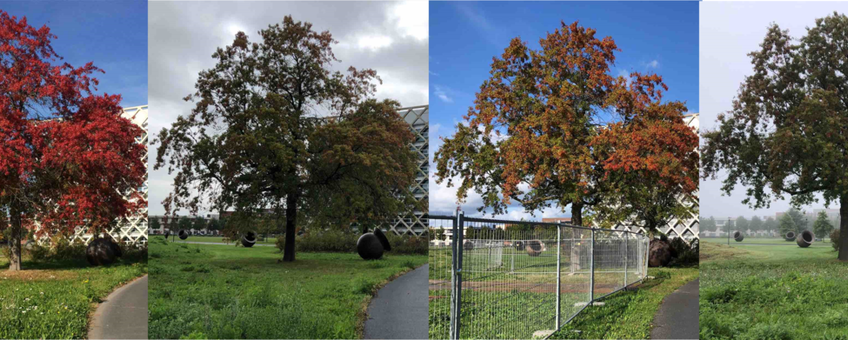
Autumn colouring in the Netherlands is late; European autumn campaign with students
De Natuurkalender, GLOBE, Wageningen UniversityThe moment of leaf colouring and leaf fall is an important moment for plants, but also for the composition of the atmosphere. With the disappearance of chlorophyll, photosynthesis, and thus energy production in the plant stops. At the same time, the absorption of CO2 by the plants stops. Because photosynthesis stops in countless plants in the northern hemisphere in autumn, the CO2 concentration in the atmosphere starts to rise by the end of September. See the course of the CO2 concentration in Hawaii over the past two years in the graph below. Mr. Keeling started measuring the CO2 concentration every hour as early as 1958. The result is the famous Keeling curve.

The Keeling curve has also been incorporated into a beautiful animation showing the course of the CO2 concentration on earth over the past 800 thousand years. In addition to the CO2 measurements on Hawaii, measurements from many other stations on Earth have been processed. By determining the CO2 concentration in air bubbles in old ice layers, it is possible to go back 800,000 years in time.
Course of CO2 concentration in the atmosphere on earth from 800,000 years ago till January 2019 (Source: NOAA)
Influence of climate change on the start of autumn colouring
The time at which the leaves change colour varies from year to year. Due to an increase in temperature, we expect autumn to start later and later. Does that happen indeed and do all plants react in the same way or are there differences? And what is the effect of drought or a lot of precipitation on leaf colouring? What are the effects of night frost and storms? Many questions to answer still.
One way to find answers is to monitor the course of leaf colouring and leaf fall. A tool for this is the GrowApp. Since spring 2017, this App has been available to the public to create time-lapse videos of changes in nature. The GrowApp was created in the context of the Dutch department of the worldwide GLOBE program together with Geodan and the Dutch phenological network De Natuurkalender of Wageningen University.
European autumn campaign
The European autumn campaign has recently started. School students from all over Europe record the development of autumn. They make GrowApp timelapse videos of various tree species. Of the tree as a whole, but also of specially marked leaves. They determine the colour of these leaves every few days with a special leaf colouration chart. Schools can still join in. A great subject for the biology or science class or the research skills course. Schools in The Netherlands can get help from Wageningen Pre-University in starting up and completing the programme. Also view the teaching materials on the European campaign page.
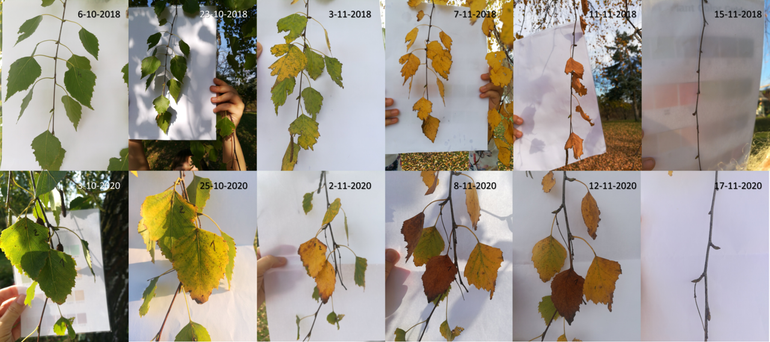
Watch the entire timelapse video on GrowApp.today.
Late start of autumn
From the analysis of many historical observations of leaf colouration, we already know that the temperature in September has a strong influence on the rate of leaf colouration. The average temperature in September in the Netherlands in 2021 of 15.9°C comes in the top ten warmest September months since 1901. Also, there has been no night frost yet. Various GrowApp series below show that autumn colouring starts late in 2021.
The temperature on the ground dropped below freezing last weekend. It is still unclear whether frost on the ground is enough to accelerate the process of leaf colouration.
Do you also find it interesting to record the development of autumn colouring in nature in beautiful time-lapse videos and participate in scientific research at the same time? Then install the GrowApp (Android, en iOS).
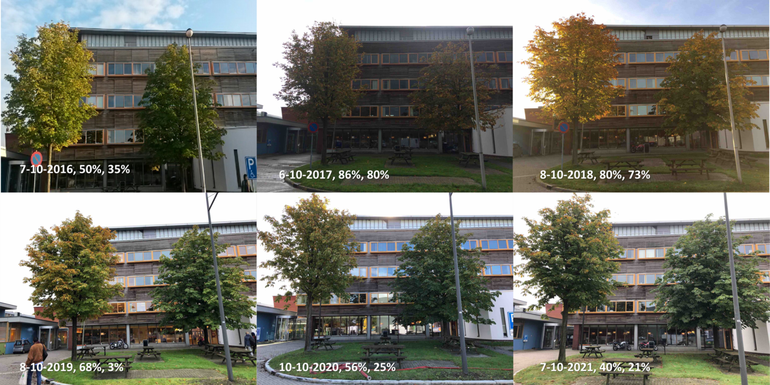
Watch the entire timelapse video on GrowApp.today.
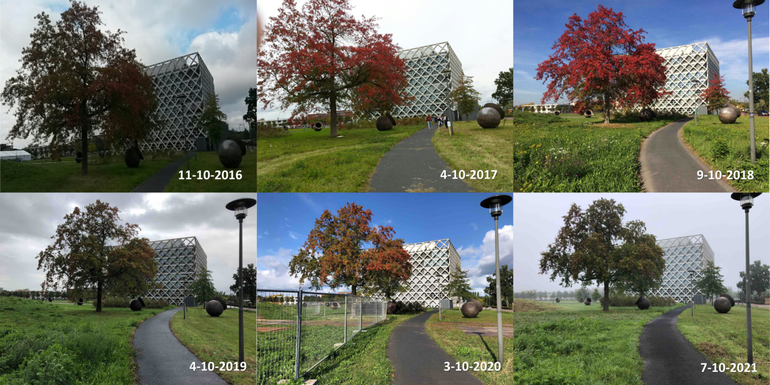
Watch the entire timelapse video on GrowApp.today.
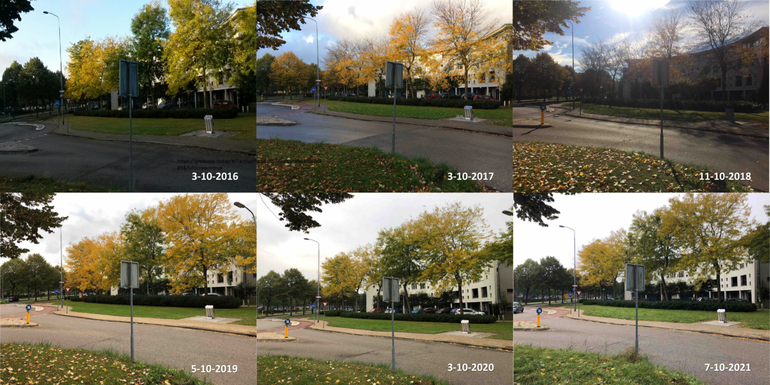
Watch the entire timelapse video on GrowApp.today.

Watch the entire timelapse video on GrowApp.today.
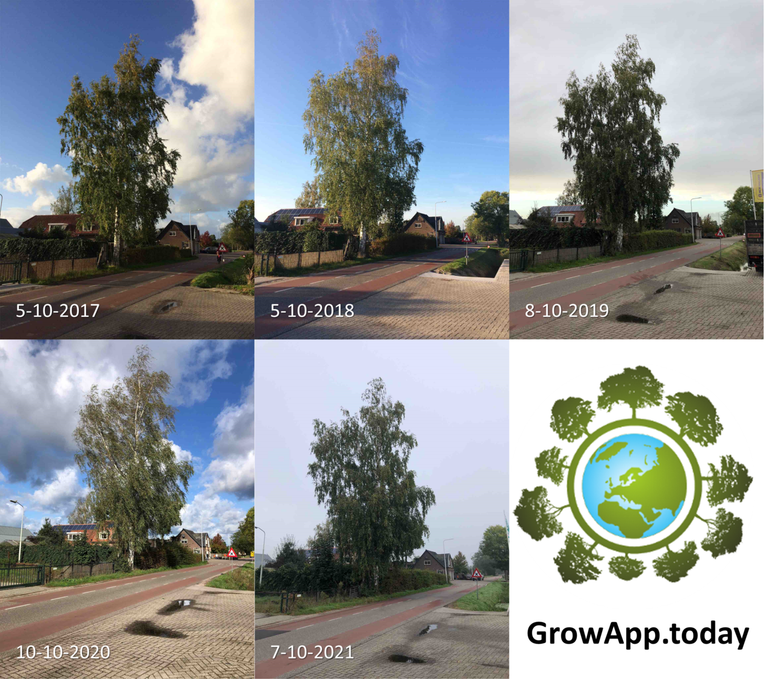
Watch the entire timelapse video on GrowApp.today.
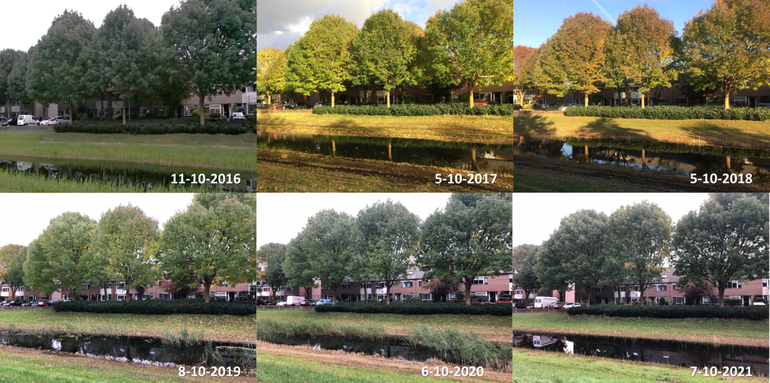
Watch the entire timelapse video on GrowApp.today.
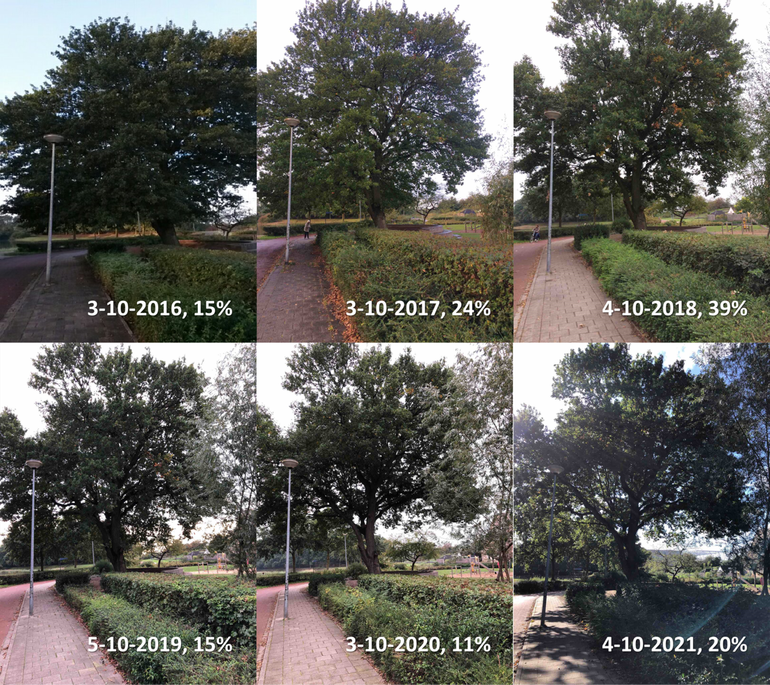
Watch the entire timelapse video on GrowApp.today.

Watch the entire timelapse video on GrowApp.today.

Watch the entire timelapse video on GrowApp.today.
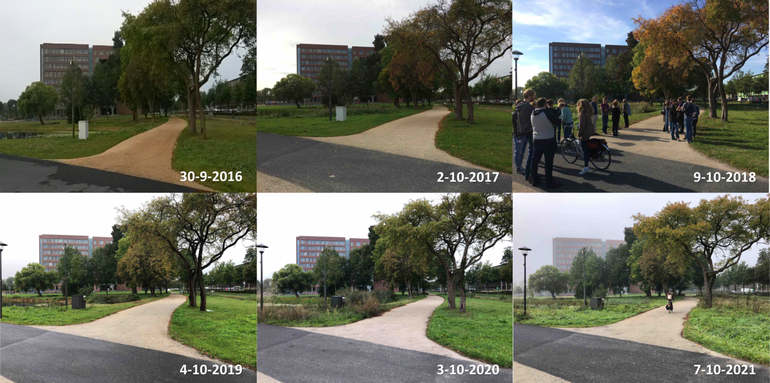
Watch the entire timelapse video on GrowApp.today.
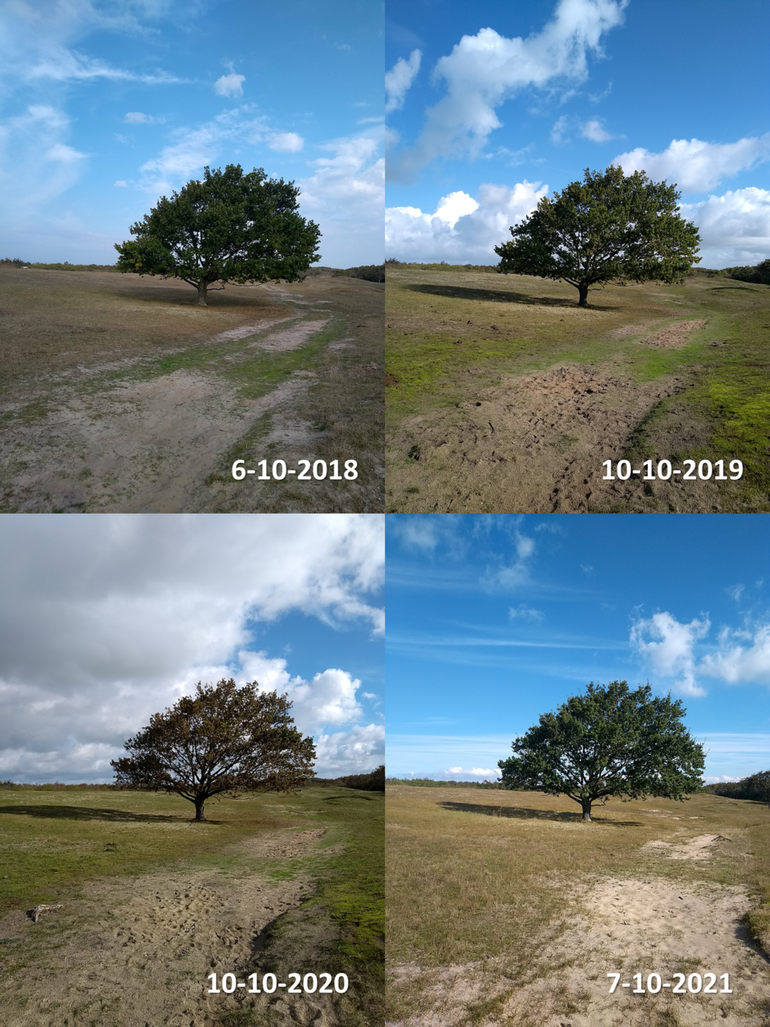
Watch the entire timelapse video on GrowApp.today.
Text: Arnold van Vliet, De Natuurkalender, Wageningen University en Stichting GLOBE Nederland
Photo’s: GrowApp
Figure: Scripps Institution of Oceanography
Video: NOAA
